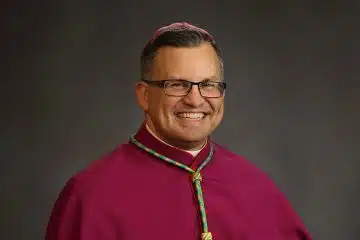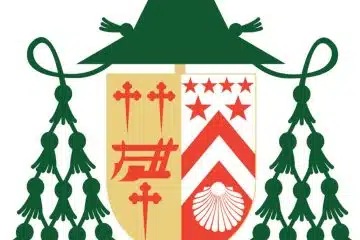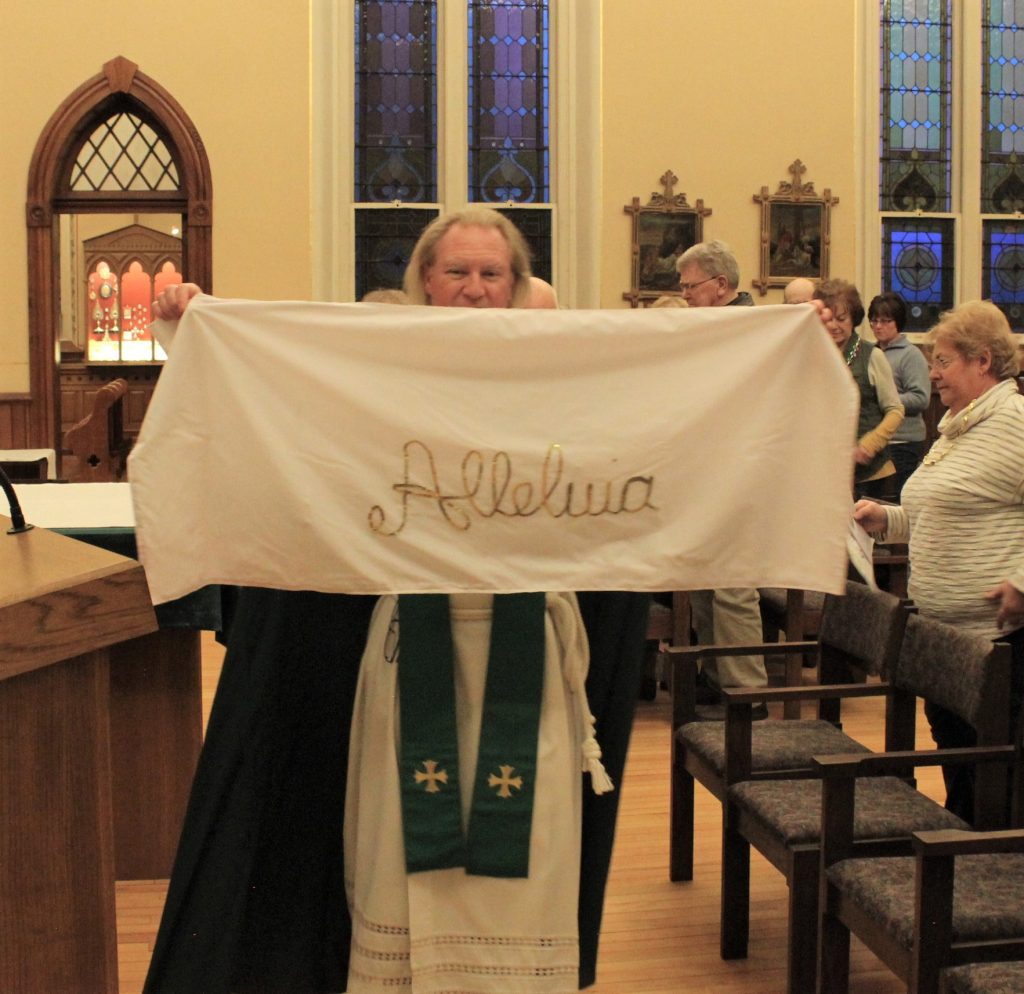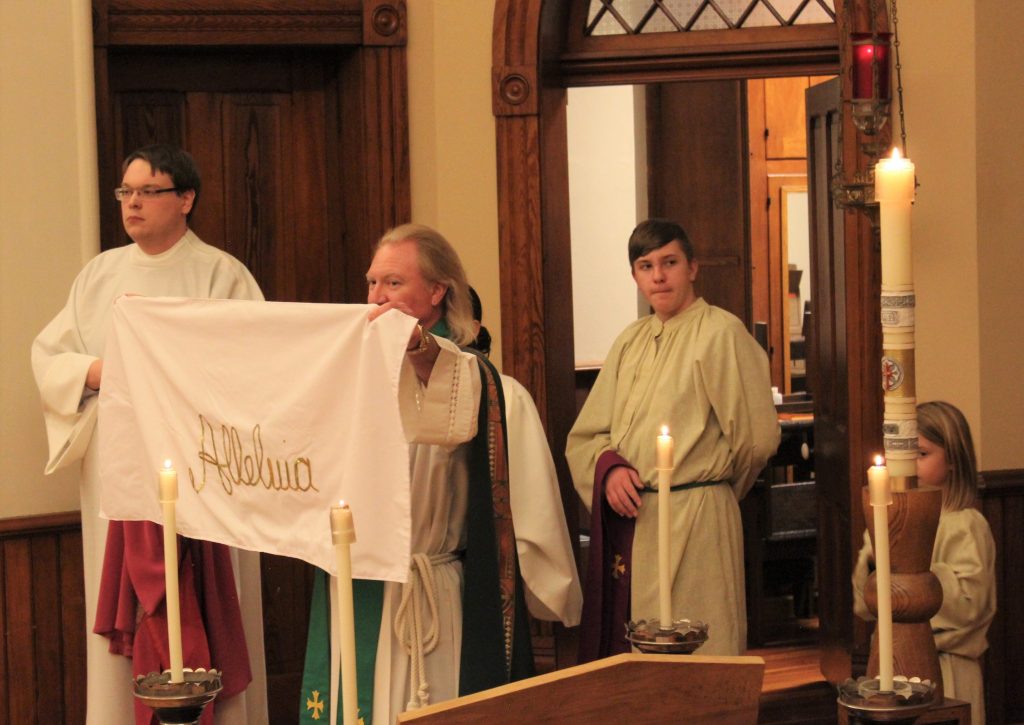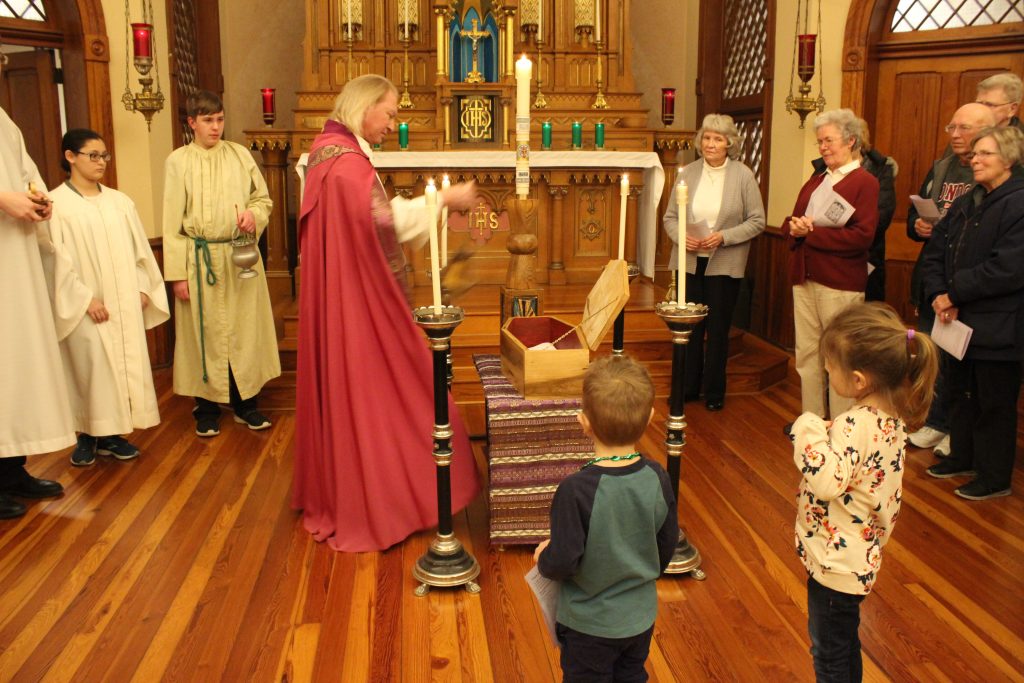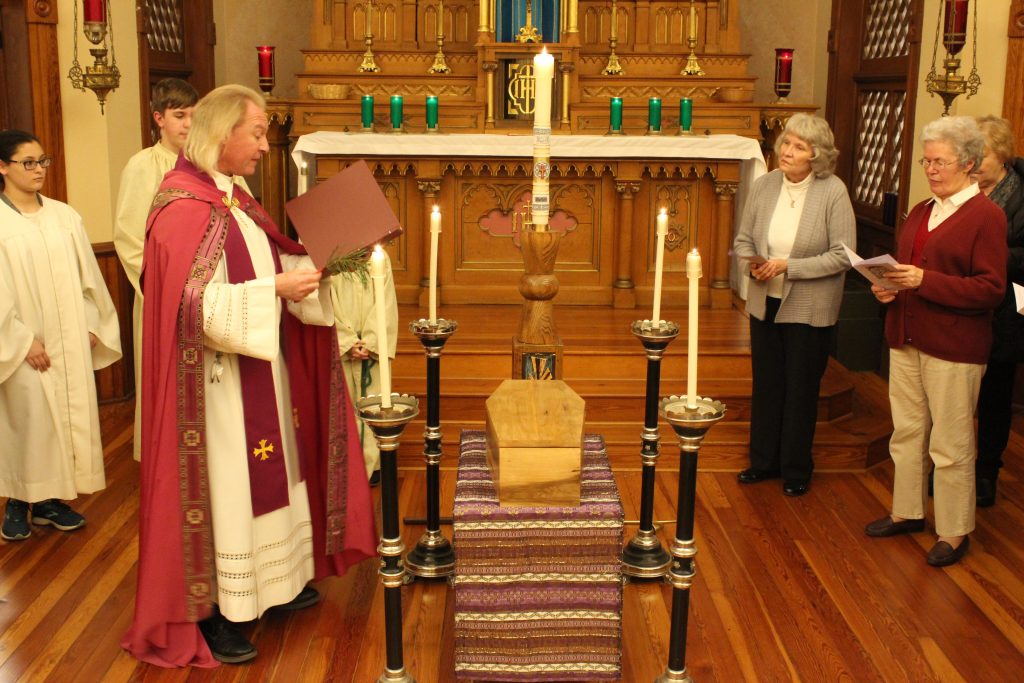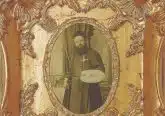Maria Stein Shrine Resurrects Shrove Tuesday
Story & photos by Susie Bergman
Say the words “Fat Tuesday” or “Mardi Gras” to most people, and they may smile sheepishly at the Christian holiday that has become synonymous with beads, booze and debauchery. But not all of them. In Mercer County, Matthew Hess has been on a mission to bring back the integrity of such pre-Lenten traditions to the northern area of the archdiocese.
Hess, who has a degree in theological studies from the University of Dayton and wrote his Master’s thesis on the Sisters of the Precious Blood, has been the Director of Ministry at the Maria Stein Shrine of the Holy Relics for four years. He introduced the first Shrove event in 2017, which was met with quite a few blank looks.
Shrove Tuesday
“When planning our first event, I was unsure as to what to call it, but ended up with Shrove because it’s less tainted by partying and the secular culture,” reflected Hess. “Naturally, I was also concerned that most people wouldn’t really know what that means, but it has caught on and we continue to draw larger crowds. The event isn’t devoid of family-friendly fun, and has a deeper meaning as well, both of which draw people in.”
Shrove, derived from the old middle English word shrive, refers to the confession of sins as a preparation for Lent, a usual practice in Europe in the Middle Ages. It was a tradition for people to eat pancakes on Shrove Tuesday as a way to use up eggs, sugar and fat, once forbidden during the Lenten fast. Although it is now commonly referred to as Fat Tuesday or Mardi Gras, it is still deeply rooted in religious meaning and used for self-examination, introspection and reconciliation.
Farewell to the Alleluia
Hess continued, “After the pancake dinner, we move down to the Shrine’s Adoration Chapel and bid farewell to the Alleluia. The ceremony really does look like a funeral and ends with the ministers changing over the altar appointments to purple in anticipation of Ash Wednesday observances the next day.”
During the Shrine’s symbolic burial ceremony, Father John Tonkin, Shrine Rector, carries a banner beautifully embroidered with the word Alleluia. He then gives a reflection on the significance of the act in relation to the upcoming Lenten season. The Alleluia banner is placed inside a small coffin, adorned with vigil candles, and shut with a thunderous bang. It is then sung for the last time and not heard again until it suddenly bursts into glory during the Mass of the Easter Vigil when the celebrant intones this sacred word after the Epistle, repeating it three times, as a jubilant herald of the Resurrection of Christ.
“Christians are a Resurrection people, and our song is Alleluia! However, during Lent we do not sing or say the word Alleluia. The absence of this joyous word reminds us of the Hebrew people waiting for the Messiah; Jesus’ time spent in the desert struggling with Satan; and our current world with its many injustices,” said Father Tonkin, “Not singing and saying Alleluia reminds us that we look forward to the joys of Easter, and to the joys of the Second Coming of Christ when all will share totally in the fullness of God’s Kingdom.” Alleluia indeed!
IF you go: This just in… this event has been cancelled due to weather
What: Fat Tuesday Pancake Dinner and burial of the Alleluia
When: Tuesday, February 25, 2020 Dinner at 5:30 p.m., burial of the Alleluia at 6:30 p.m.
Where: Maria Stein Shrine, 2291 St. Johns Road, Maria Stein OH 45860
For more information on Maria Stein Shrine events, visit mariasteinshrine.org.





